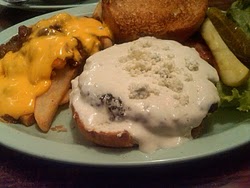Today, in the United States obesity seems to be at an all time high in recent years. Diabetes, which is now considered a common factor of obesity, has taken a toll on the young adolescent and more so people in urban societies. In the movie Food Inc., Eric Schlosser says the “biggest predictor of obesity is income level” and a person’s income level justifies not only what he/she can afford but also the size of that individual.
How a person lives (survives) and maintains their lively hood is based on their income, they rely solely on just their income alone. Capital is everything in todays world and you need lots of it to live comfortably, but when your level of income starts to affect your health in ways you have no control over, its upsetting. In the movie Food Inc. the Gonzalez family faces a tough time when having to deal with buying junk food as oppose to buying food more nutritious like fruits or vegetables, which is more expensive then that of junk food which is cheaper. The father has diabetes and has to take two different types of medication both costing over $100 each, causing the family to resort to foods that contain nothing but sugar, salt, and fat. The parents ultimately feel guilty for not having enough money to buy groceries and taking their kids to go eat fast food. For Maria Gonzalez (mother) it’s either pay for her husbands medicine to be healthy or buy vegetables for the family to be healthy, knowing dad is the sole proprietor it’s kind of a lose lose situation.
When I look at obesity I see it as somewhat of a plague on us, something that has skyrocketed in low-income communities. The fast food industry blames obesity on one’s personal responsibility but as Eric Schlosser says, the industry that engineers the food is mainly causing it, and I would have to agree. Taking a glance at people who live in low-income communities and people with low-income aren’t offered a variety of nutrients. There’s a fast food restaurant maybe every 5-10 blocks away from each other, the supermarkets don’t offer as much of those in high-income communities, and there is not one fruit or vegetable stand around. People with low-income levels get the short end of the stick because they have to work much harder to make it to that level of people at a higher income level. While there working they don’t have time to cook, so there buying or ordering out food, and even if they found the time, guess what? they can’t afford to buy the healthier food. So in part from food Inc. it is said that 1 in 3 Americans born after 2000 will contract diabetes and among minorities the rate will be 1 in 2 and that’s for the low-income working class.
